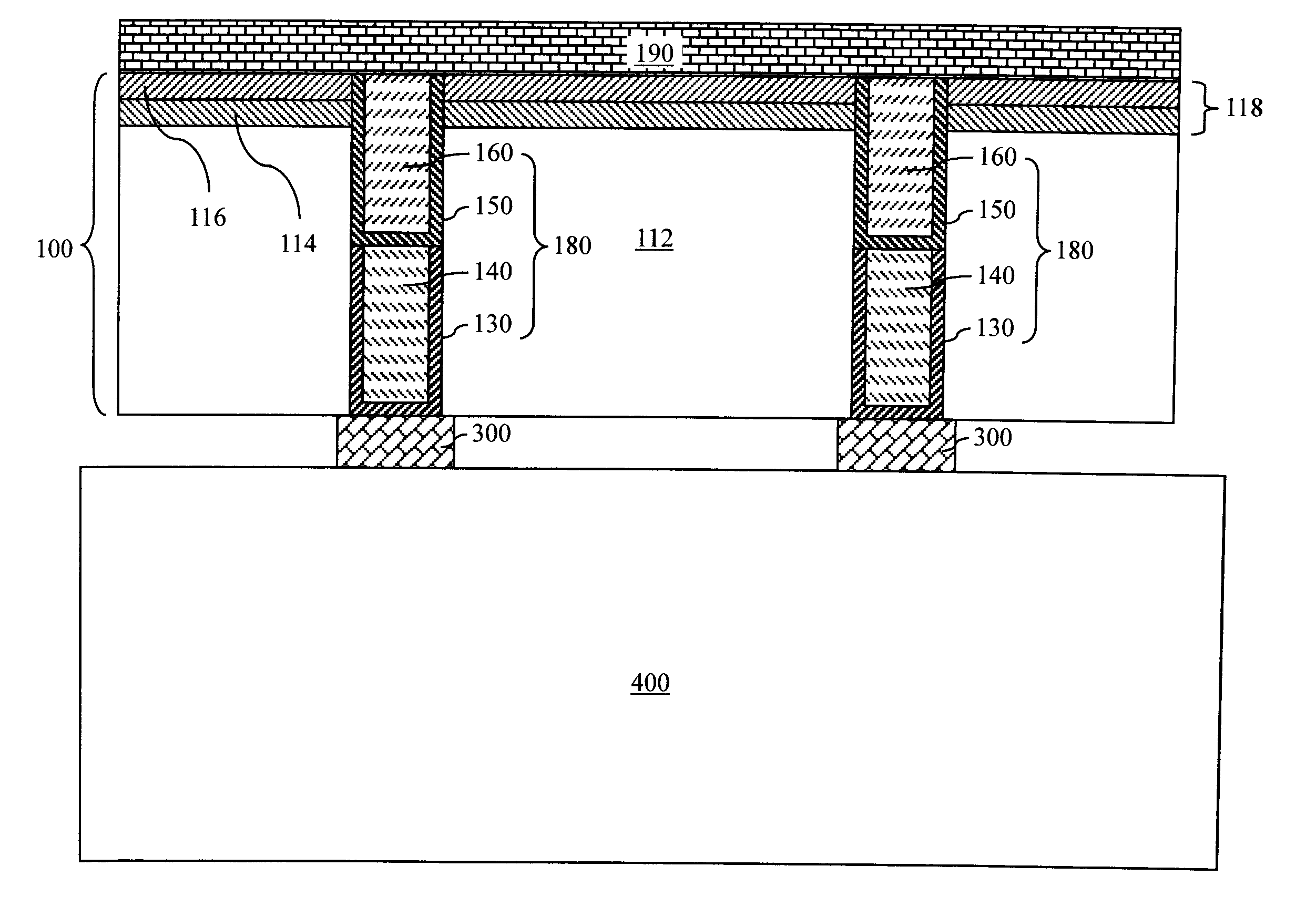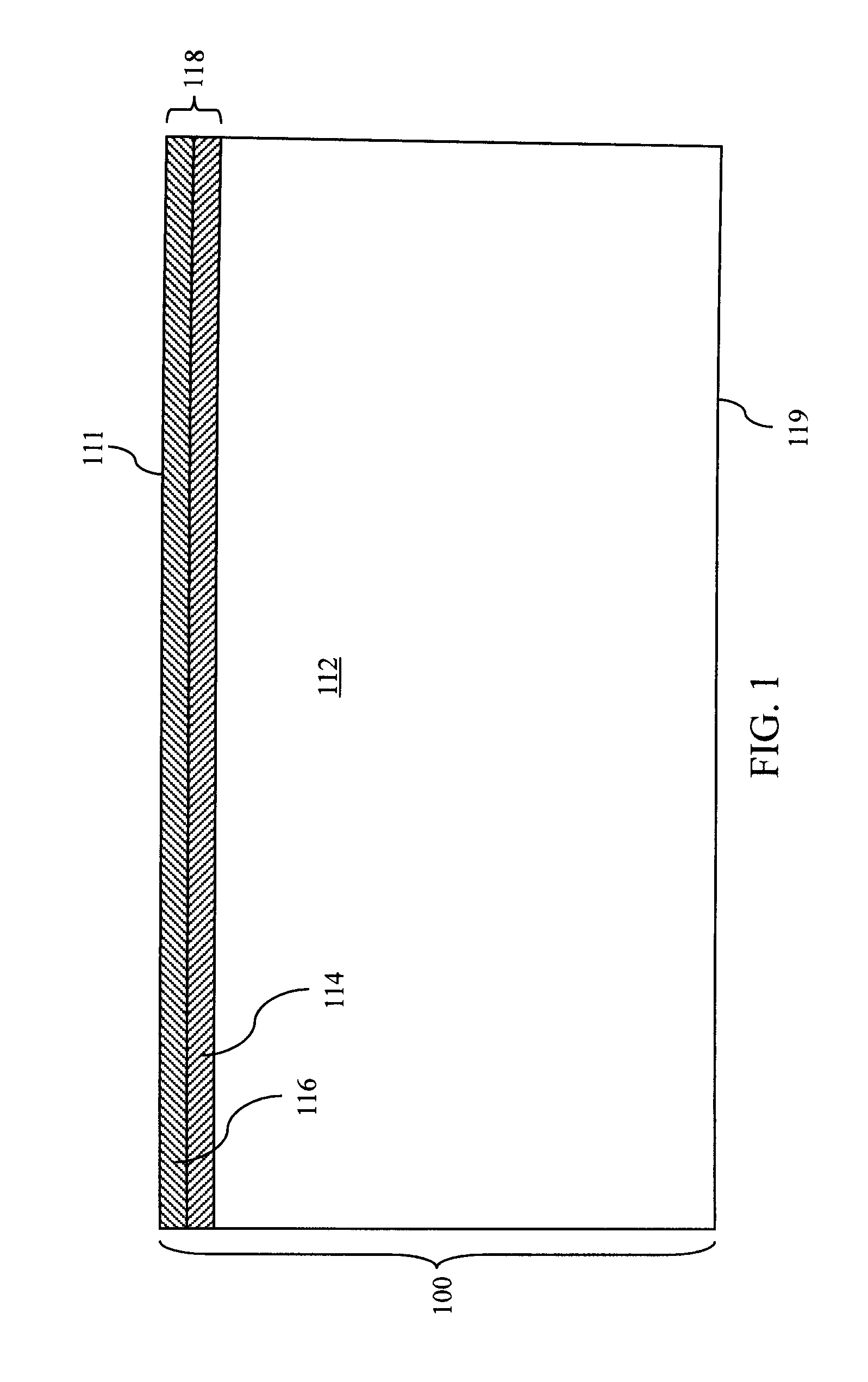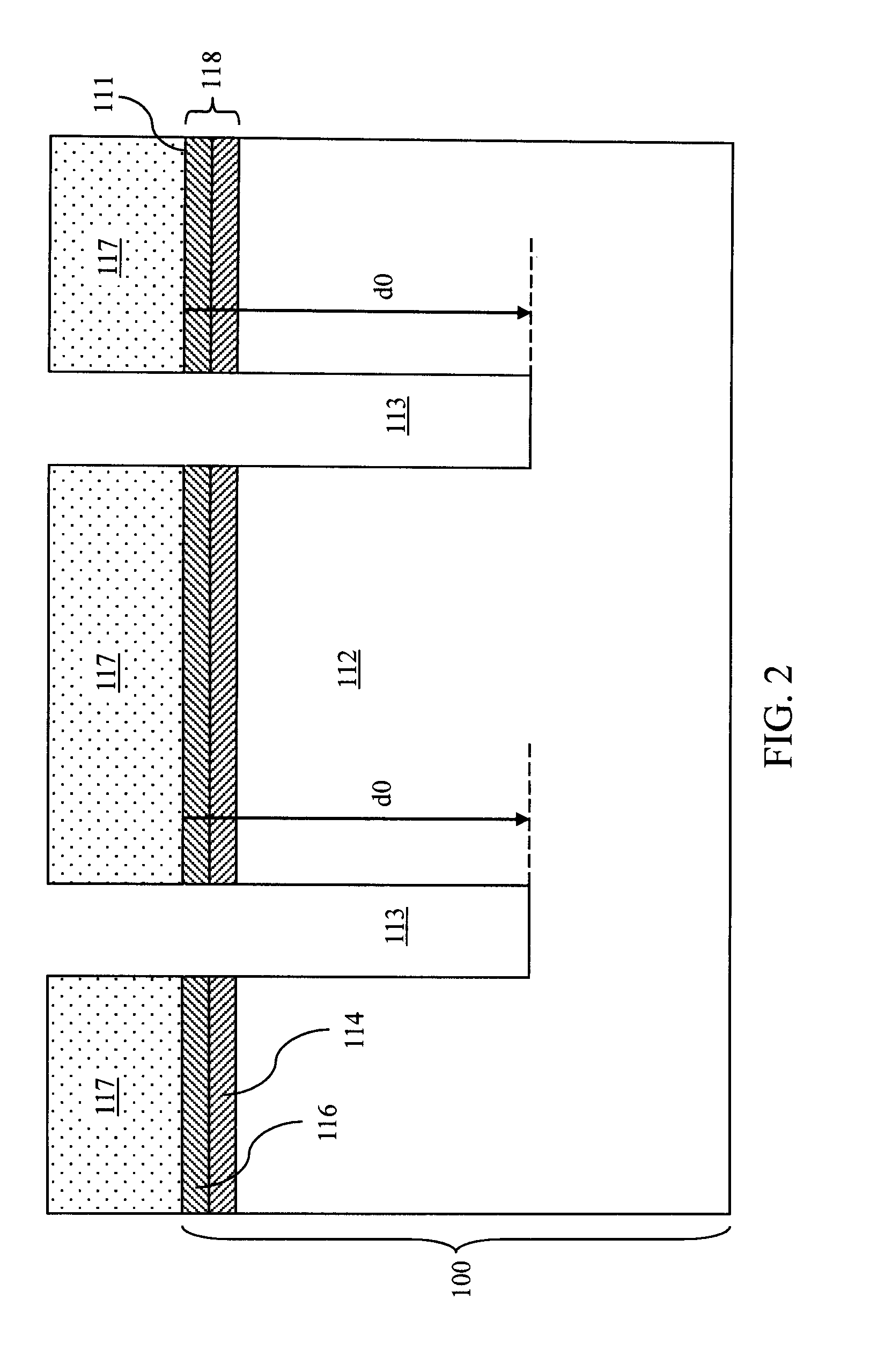Electromigration immune through-substrate vias
a technology of electron immunodetection and through-substrat via, which is applied in the direction of semiconductor devices, semiconductor/solid-state device details, electrical apparatus, etc., can solve the problems of increasing electron scattering, metal ions to dislodge from the lattice and move physically, and metal lines or metal vias no longer provide a conductive path in the metal interconnect, etc., to achieve reliable electrical connection
- Summary
- Abstract
- Description
- Claims
- Application Information
AI Technical Summary
Benefits of technology
Problems solved by technology
Method used
Image
Examples
first embodiment
[0028]Referring to FIG. 1, a first exemplary semiconductor structure according to the present invention includes a first substrate 100. The first substrate 100 can include a first handle substrate 112 and a first semiconductor-device-containing layer 118 that can include at least one semiconductor device such as a field effect transistor, a bipolar transistor, a diode, a thyristor, and a memory cell. The first semiconductor-device-containing layer 118 can include semiconductor devices for a semiconductor chip. The first substrate 100 typically has a first substantially planar surface 111 on one side and a second substantially planar surface 119 on an opposite side. The thickness of the first substrate 100 is typically from 100 microns to 1,000 microns, although lesser and greater thicknesses can also be employed.
[0029]A lower portion of the first semiconductor-device-containing layer 118 can include a semiconductor material layer 114. The semiconductor material layer 114 includes a ...
second embodiment
[0068]Referring to FIG. 11, a second exemplary semiconductor structure according to the present invention is derived from the first exemplary semiconductor structure by employing a second substrate 200 including at least another TSV structure 280, which can be a second plurality of TSV structures. The second plurality of TSV structures 280 in the second substrate 200 can be formed employing the same processing steps as illustrated in FIGS. 2-9. Each of the at least another TSV structure 280 extends from the third substantially planar surface 211 to a fourth substantially planar surface 219 that are located on opposite sides second substrate 200. Each of the at least another TSV structure 280 includes another plurality of conductive via segments that are vertically spaced from one another by at least another conductive liner portion. The at least another TSV structure 280 in the second substrate 200 is formed before forming the second BEOL metal interconnect layer 290 and bonding of ...
third embodiment
[0070]Referring to FIG. 12, a third exemplary semiconductor structure according to the present invention is derived from the first exemplary semiconductor structure by employing a packaging substrate 400 instead of a second substrate 200. The packaging substrate 400 can be a ceramic substrate or a laminar substrate comprising a dielectric material.
[0071]The array of conductive bonding material structures 300 provides a plurality of electrical connections between the at least one semiconductor device in the first semiconductor-device-containing layer 118 and the conductive structures located in the packaging substrate 400 to provide three-dimensional chip integration.
[0072]Further, any mounting structure can be employed instead of a second substrate 200 or a packaging substrate to provide a three-dimensional integration of semiconductor chips as needed. Because the length of each conductive via segment does not exceed the Blech length, each of the at least one TSV structure 180 and t...
PUM
 Login to View More
Login to View More Abstract
Description
Claims
Application Information
 Login to View More
Login to View More - R&D
- Intellectual Property
- Life Sciences
- Materials
- Tech Scout
- Unparalleled Data Quality
- Higher Quality Content
- 60% Fewer Hallucinations
Browse by: Latest US Patents, China's latest patents, Technical Efficacy Thesaurus, Application Domain, Technology Topic, Popular Technical Reports.
© 2025 PatSnap. All rights reserved.Legal|Privacy policy|Modern Slavery Act Transparency Statement|Sitemap|About US| Contact US: help@patsnap.com



